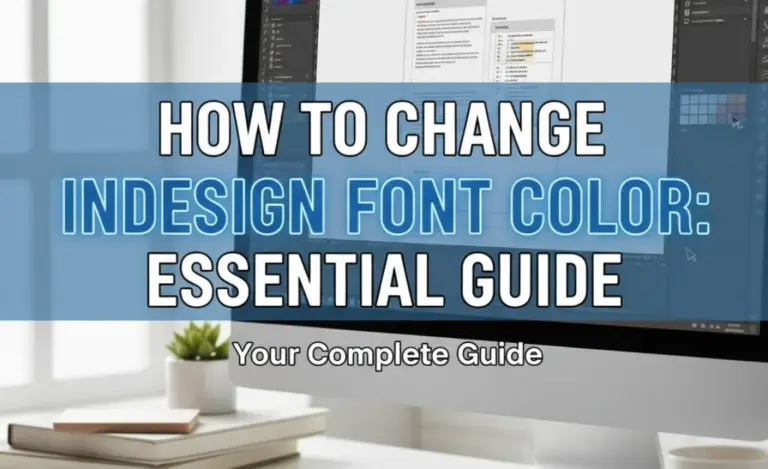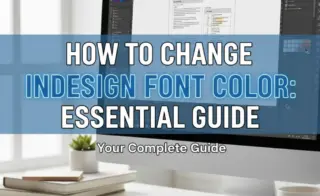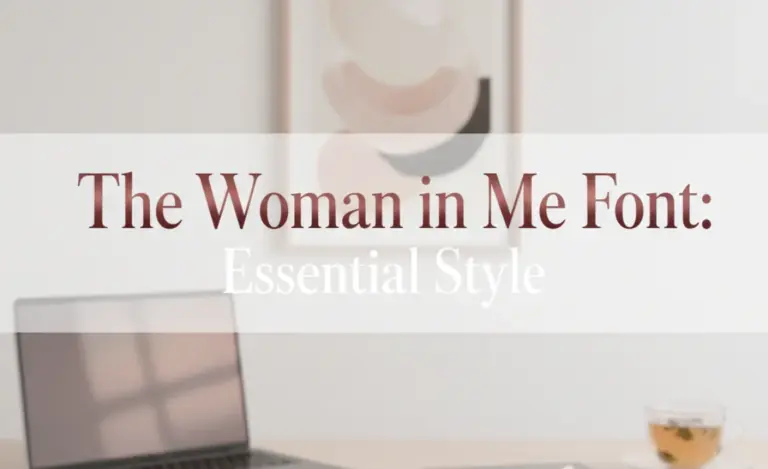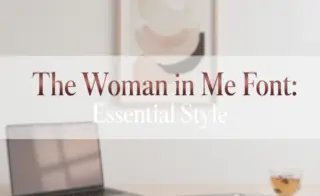Odd Future Font: The Ultimate Beginner’s Guide to Unleashing Creative Expression. Discover how this distinctive typeface can elevate your designs, from logos to merchandise, with practical tips and visual inspiration. Learn where to find it and how to use it effectively to make your projects stand out.
Ever stumbled upon a design that just felt… different? Bold, quirky, and bursting with personality? That’s often the magic of a well-chosen font. If you’re looking to inject some serious attitude and unique flair into your branding, merchandise, or online content, you’ve probably heard whispers of the “Odd Future font.” But what exactly is it, and how can you harness its power? Figuring out unique fonts can sometimes feel like a challenge, leaving you wondering where to even start. Don’t worry, I’m here to guide you through it. We’ll break down everything you need to know about this eye-catching typeface, making it super simple to use in your next creative project.
Unpacking the “Odd Future Font”: What Makes It So Special?
The term “Odd Future font” isn’t tied to a single, officially named typeface in the way that, say, Arial or Times New Roman are. Instead, it generally refers to a style of font that evokes the unconventional, rebellious, and playful aesthetic associated with the creative collective Odd Future Wolf Gang Kill Them All (OFWGKTA), often shortened to Odd Future.
This style typically features:
- Handwritten or Brush-like Qualities: Many fonts that capture the Odd Future vibe mimic the look of marker pens, spray paint, or rough brush strokes. They are often imperfect, giving them an authentic, DIY feel.
- Bold and Expressive Letterforms: The letters are usually chunky, dynamic, and can be quite irregular. They don’t shy away from being noticed.
- A Sense of Youthful Energy: There’s an undeniable, almost raw energy that speaks to youth culture, skateboarding, music, and streetwear.
- Slightly Distorted or “Messy” Elements: Sometimes, letters might have drips, uneven lines, or slightly off-kilter angles, adding to their distinctive character.
- Versatility in Application: Despite their bold appearance, these fonts can work across a surprising range of applications when used thoughtfully.
Think of it as a font that doesn’t play by the typical design rules. It’s loud, proud, and full of personality, making it perfect for brands that want to stand out and connect with a younger, trend-aware audience.
Why You Might Want to Use an “Odd Future” Style Font
Choosing the right typography is crucial for conveying your brand’s message and personality. An “Odd Future” inspired font can be a powerful tool for several reasons:
- Unique Brand Identity: In a crowded market, a distinctive font helps you carve out your own niche. If your brand is edgy, youthful, or rooted in subcultures like skateboarding, music, or streetwear, this style can authentically represent you.
- Grabbing Attention: These fonts are designed to be noticed. They can make logos, headlines, t-shirt designs, and posters pop in a way that more conventional fonts simply can’t.
- Conveying Emotion and Attitude: The inherent energy and imperfection of these fonts can communicate excitement, rebellion, creativity, and a sense of community.
- Appealing to a Target Demographic: If your audience appreciates art, music, fashion, and a less corporate aesthetic, fonts in this style can resonate deeply with them.
- Versatile Creative Applications: Beyond logos, explore using them for event flyers, album art, social media graphics, website banners, and even product packaging to add an unforgettable touch.
Finding Fonts That Embody the “Odd Future” Vibe
Since “Odd Future font” isn’t a specific product, you’ll need to look for fonts that share its characteristic style. Fortunately, there are many creative options available. Here’s how to hunt them down:
Keywords to Use in Your Font Search
When browsing font marketplaces or design resources, try these search terms:
- Handwritten script font
- Brush script font
- Graffiti font
- Marker font
- Spray paint font
- Urban font
- Streetwear font
- Stencil font (sometimes, for a related edgy vibe)
- Alternative script font
Where to Discover These Fonts
Several platforms offer a treasure trove of fonts, many of which align with the Odd Future aesthetic. Here are some reliable sources:
- Google Fonts (Free): While it might take some digging, Google Fonts has a growing library of free, high-quality fonts. Look for display or script categories and experiment with keywords.
- Font Squirrel (Mostly Free): A fantastic resource for free, commercially usable fonts. Their curated list and web font generator are invaluable.
- DaFont (Free for Personal Use, Check Licenses): A massive archive with a wide variety of styles. You’ll find plenty of handwritten and display fonts here, but always double-check the license for commercial use.
- Creative Market (Paid): A marketplace where independent designers sell their fonts. This is an excellent place to find unique, high-quality options with commercial licenses.
- MyFonts (Paid): One of the largest digital font retailers, offering a vast selection from professional foundries.
- Envato Elements/GraphicRiver (Subscription/Paid): Offers a subscription for unlimited downloads or individual font purchases.
Tip: When you find a font you like, don’t just look at the font itself. Check out the designer’s other work; they might have created a whole collection with a similar vibe!
Popular “Odd Future” Style Fonts (Examples)
To give you a clearer picture, here are a few types of fonts that often capture the spirit of the “Odd Future font.” Note that these are descriptions of styles, and specific font names might vary. Always check licensing for commercial use.
Illustrative Font Examples
Here are some fonts that capture a similar raw, expressive energy:
- Badhand Lettering: Often characterized by bold, uneven strokes and a high degree of personality, reminiscent of quick marker scribbles.
- Homestead (Stencil/Geometric Hybrid): While more structured, certain stencil or blocky fonts can offer a similar urban, DIY feel if the letterforms are slightly rough.
- Street Script Fonts: Many fonts specifically designed with a street art or graffiti influence will have that bold, immediate impact.
- Rough Brush Fonts: These mimic the texture and movement of a brush dipped in paint, providing an artistic and energetic feel.
When searching, look for fonts that have a tangible “hand-done” quality. The imperfections are often what give them their charm and authenticity.
Selecting the Right Font: Key Considerations
Choosing a font is more than just picking something that looks cool. It’s about finding the right fit for your project’s goals. Here’s what to keep in mind:
Readability
This is paramount. Even the coolest font is useless if people can’t read your message. While “Odd Future” style fonts are often display-oriented (meant for headlines and short bursts of text), consider how they perform at different sizes. Can you still read a sentence or two in it? If it’s for a logo, ensure the brand name is legible at a glance.
Brand Alignment
Does the font’s personality match your brand’s? If you’re selling luxury perfumes, a messy graffiti font probably isn’t the best choice. But if you’re a skate shop, music label, or an artist, it could be perfect. Ensure it speaks to your target audience and reinforces your brand values.
Licensing
This is a big one, especially for businesses. Free fonts often come with restrictions. Many are only licensed for personal use. Always check the font’s license agreement before using it for any commercial project (e.g., selling products, using it on a business website). Websites like Creative Commons offer great information on licensing for creative works.
Versatility
Think about where you’ll use the font. Will it work for both your logo and your social media graphics? Does it have different weights or styles (e.g., regular, bold, italic)? While a single bold style is common for this type of font, having options can be beneficial.
File Format
Most fonts come in OpenType (.otf) or TrueType (.ttf) formats. Both are widely compatible with design software and operating systems. Web fonts often come in WOFF/WOFF2 formats for use on websites.
Practical Tips for Using “Odd Future” Style Fonts Effectively
Once you’ve found your perfect font, the real fun begins! Here’s how to use it like a pro:
1. Use for Impactful Headlines and Logos
These fonts excel at creating a strong first impression. Use them for:
- Main titles and headings on websites, posters, flyers, or merchandise.
- Brand logos that aim for a bold, memorable, and edgy identity.
- Call-to-action buttons or key phrases where you really want to draw attention.
2. Pair Wisely with Other Fonts
A busy font can overpower your entire design if used everywhere. The best approach is often to pair it with a simpler, more neutral font. Consider these pairings:
- Pair a bold, brushy font with a clean sans-serif font like Open Sans, Montserrat, or Lato for body text. The sans-serif provides readability and balance.
- Use a simple serif font for longer blocks of text if the overall brand aesthetic allows it, creating a contrast between classic and rebellious.
- Experiment with different font weights. A light or regular weight sans-serif can be a subtle companion to a strong display font.
A good rule of thumb is to use your display font for about 10-20% of the text on a page, reserving the rest for a highly readable font.
3. Don’t Overdo It
Less is often more. Overusing a highly stylized font can make your design look cluttered, unprofessional, or difficult to read. Stick to using it for focal points.
4. Consider the Context
Where will your design be seen? A font that looks great on a t-shirt might be illegible on a tiny business card or as an emoji. Always test your font choice in various applications.
5. Leverage Negative Space
Bold fonts can sometimes feel heavy. Give them room to breathe! Ample negative space around your text can make it more impactful and easier on the eyes.
6. Embrace Imperfection
The charm of these fonts often lies in their imperfections. Don’t strive for absolute perfection; the slight wobbles, drips, or variations are part of the character. Let them shine!
“Odd Future” Inspired Font Styles: A Comparison
To help you distinguish between similar styles, consider this table:
| Font Style | Key Characteristics | Best For | When to Avoid |
|---|---|---|---|
| Graffiti/Street Art | Often irregular, bold, spray-painted look, angular. Can be dense. | Urbanwear, music posters, event flyers, edgy branding. | Formal documents, long body text, very conservative brands. |
| Brush Script | Fluid, dynamic strokes, often with natural texture. Can range from elegant to messy. | Creative agencies, artisanal products, event invitations, personal branding. | Technical manuals, corporate reports, situations requiring extreme legibility at small sizes. |
| Marker/Handwritten | Looks like it was quickly written with a thick marker or pen. Often informal, bold, and energetic. | Merchandise, social media graphics, youth-oriented products, informal signage. | Formal corporate identity, scientific publications, contexts demanding a polished, classic feel. |
| Stencil | Letters have breaks or “bridges” to allow for spray-painting or cutting. Bold, industrial, often geometric. | Military-inspired fashion, industrial design, rugged branding, posters. | Feminine brands, delicate designs, when a continuous line is essential. |
Real-World Examples and Inspiration
The Odd Future collective itself famously used bold, often handwritten or spray-painted style graphics and typography across their clothing, music, and online presence. This visual language became synonymous with their brand identity.
Think about:
- Music Album Covers: Many independent hip-hop, punk, or indie bands use these expressive fonts to convey raw energy and authenticity.
- Skateboarding and Streetwear Brands: Logos and apparel designs for brands targeting skate culture frequently feature fonts with this kind of dynamic, hand-drawn feel.
- Art and Design Exhibitions: Posters and promotional materials for underground art shows or experimental design events often utilize these attention-grabbing typefaces.
- Festival Branding: Music or art festivals aiming for a vibrant, youthful, and energetic vibe might use such fonts in their branding.
To find more inspiration, explore platforms like Pinterest, Behance, or Dribbble. Search for terms like “streetwear typography,” “graffiti logo,” or “brush script branding” to see how designers integrate these styles.
Working with Font Files
Once you download a font, whether it’s free or paid, you’ll need to install it on your computer to use it in your design software (like Adobe Photoshop, Illustrator, or even Canva).
Installation Steps (General)
- Download the Font File: This will typically be a .zip file.
- Extract the Files: Right-click on the .zip file and choose “Extract All” or use a decompression tool. You’ll find font files (.otf, .ttf) inside.
- Install on Windows:
- Right-click on the font file (.otf or .ttf).
- Select “Install.”
- Install on macOS:
- Double-click the font file.
- Click “Install Font” in the Font Book window that appears.
- Restart Your Design Software: After installation, close and reopen any applications you use for design so they can recognize the new font.
For web use, you’ll typically receive font files in WOFF or WOFF2 formats, along with instructions on how to implement them using CSS. Resources like MDN Web Docs provide excellent guidance on web font implementation.
Common Pitfalls to Avoid
While these fonts are powerful, they can also be tricky if misused. Here are a few common mistakes:
- Using for Body Text: Extremely stylized fonts are almost always a bad idea for paragraphs or large blocks of text. They kill readability.
- Ignoring Licensing: Using a font without the proper commercial license can lead to legal issues and hefty fines. Always verify.
- Too Much of a Good Thing: Overusing the font on a single design can make it look chaotic and unprofessional.
- Poor Pairing Choices: Mismatching a highly stylistic font with another equally busy font creates visual noise.
- Low-Quality Free Fonts: Some free fonts can be poorly designed, have incomplete character sets (missing punctuation, numbers, or special characters), or display artifacts.
Frequently Asked Questions (FAQs)
What is the “Odd Future font”?
The “Odd Future font” isn’t one specific typeface but rather a style of bold, expressive, often handwritten or brush-like fonts that evoke the rebellious and youthful aesthetic of the Odd Future creative collective. It’s about attitude and visual impact.
Is the “Odd Future font” free to use?
The style can be achieved with many fonts. Some fonts in this style are free for personal use only (like on DaFont), while others are available for commercial use, either free (on Google Fonts, Font Squirrel) or for purchase (on Creative Market, MyFonts).
Where can I find fonts like the “Odd Future font”?
You can find them by searching for keywords like “graffiti font,” “brush script,” “handwritten font,” or “urban font” on font marketplaces such as Google Fonts




Leave a Comment